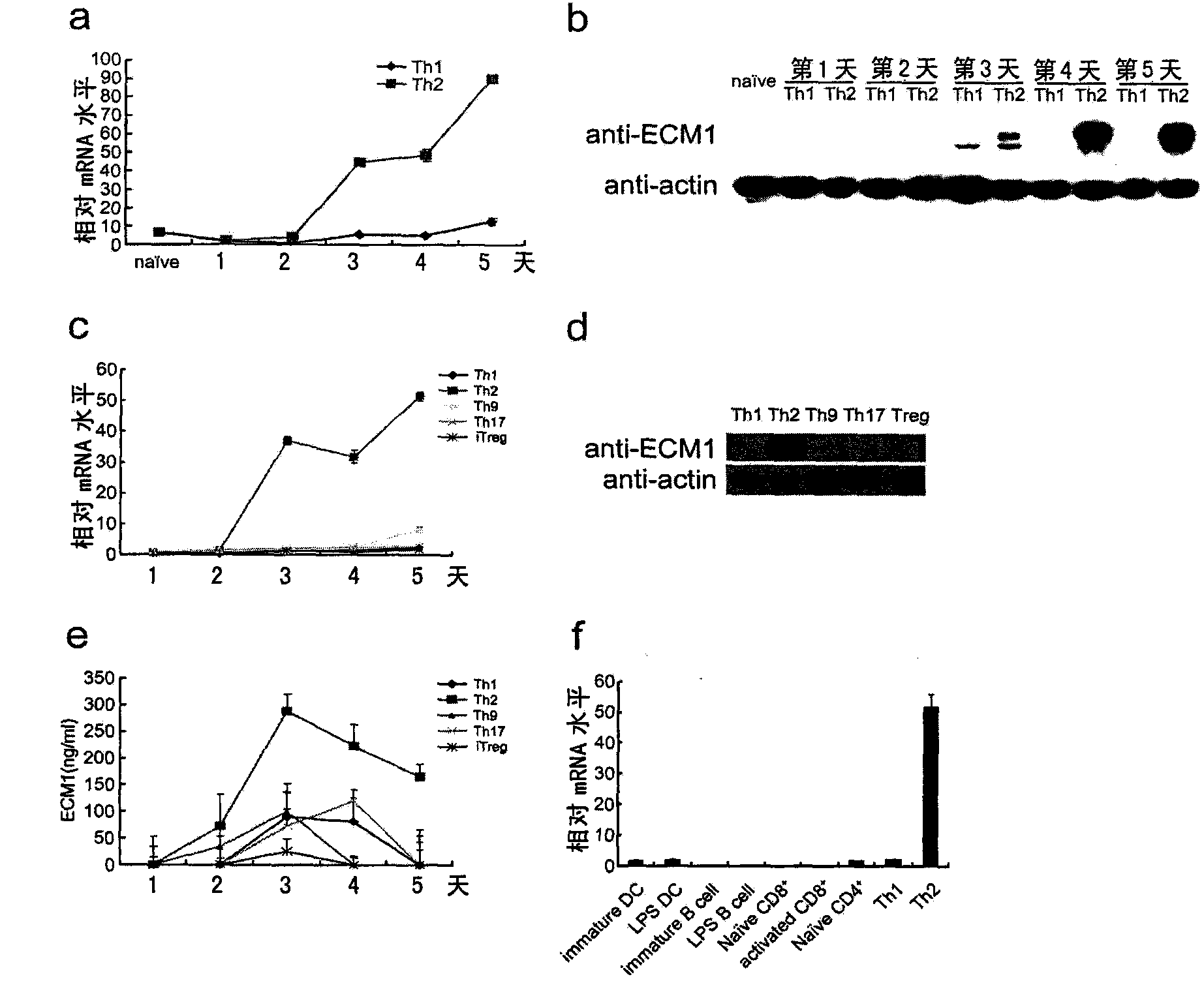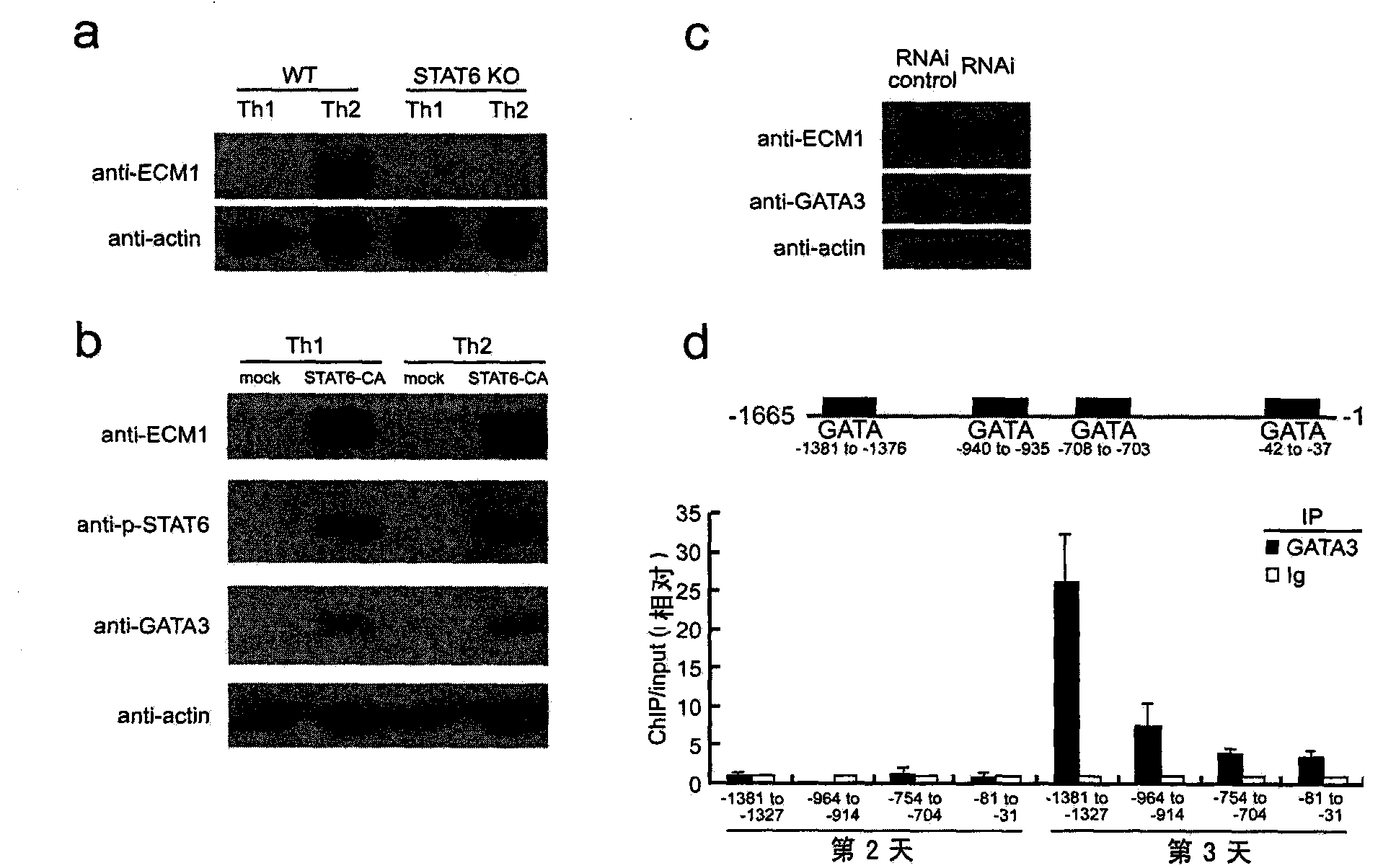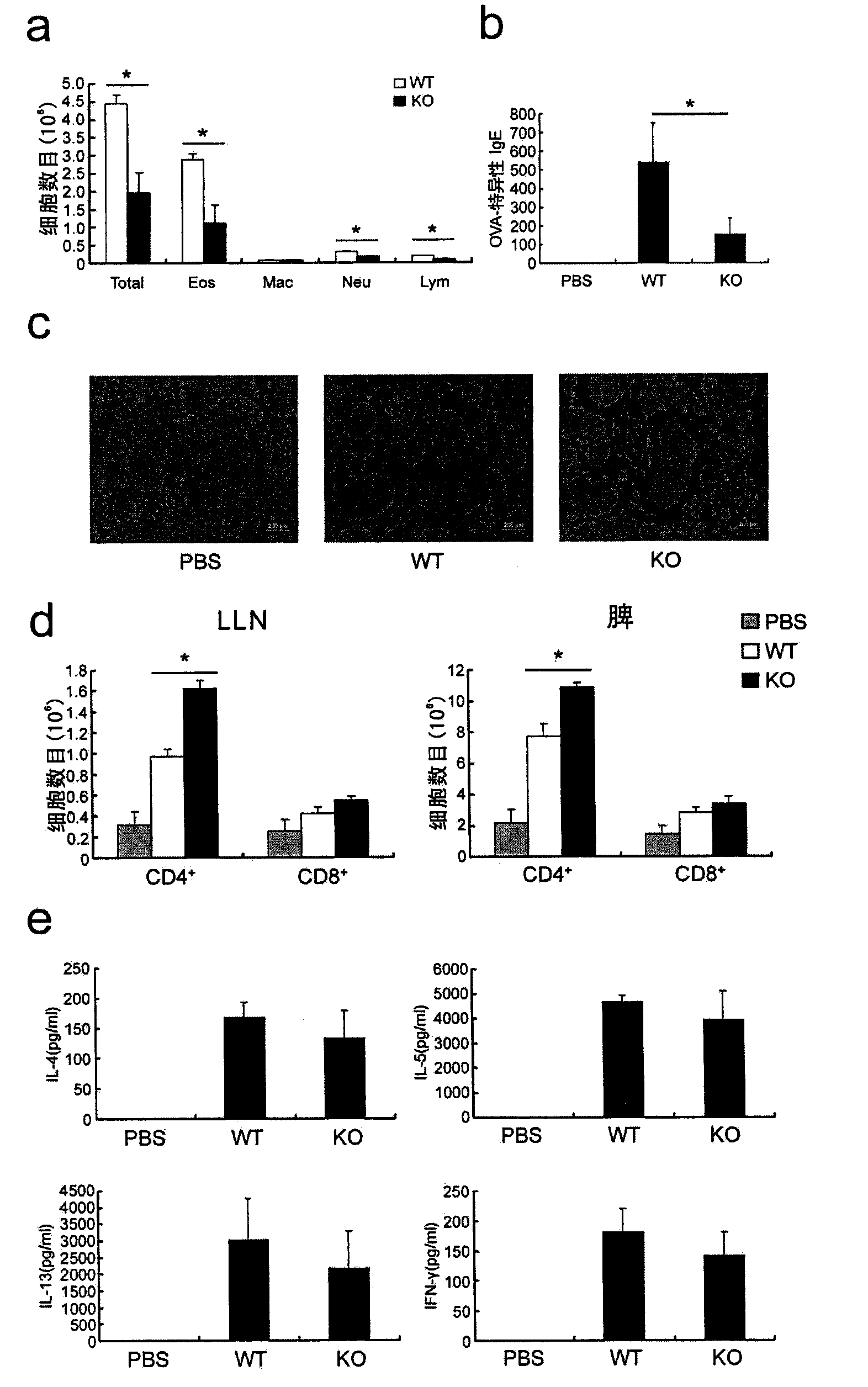Application of extracellular matrix protein 1 and regulator thereof in preparing medicament for diagnosing or treating allergic diseases
A technology for exogenous matrix and allergic asthma, applied in allergic diseases, gene therapy, drug combination, etc., can solve the problem of few specific treatment methods
- Summary
- Abstract
- Description
- Claims
- Application Information
AI Technical Summary
Problems solved by technology
Method used
Image
Examples
Embodiment approach
[0079] As an embodiment of the present invention, the ECM1 inhibitor is an antibody that specifically binds to ECM1. Said antibody can be a monoclonal antibody or a polyclonal antibody. ECM1 protein can be used to immunize animals, such as rabbits, mice, rats, etc. to produce polyclonal antibodies; various adjuvants can be used to enhance the immune response, including but not limited to Freund's adjuvant. Similarly, cells expressing ECM1 or antigenic fragments thereof can be used to immunize animals to produce antibodies. The antibody can also be a monoclonal antibody, which can be prepared using hybridoma technology (see Kohler et al., Nature 256; 495, 1975; Kohler et al., Eur.J.Immunol.6:511, 1976; Kohler et al., Eur. J. Immunol. 6:292, 1976; Hammerling et al., In Monoclonal Antibodies and T Cell Hybridomas, Elsevier, N.Y., 1981).
[0080] As an embodiment of the present invention, the ECM1 inhibitor is an antibody or ligand that specifically binds to an upstream protein ...
Embodiment 1
[0155] Example 1. ECM1 is specifically highly expressed in type II helper T cells (Th2)
[0156] The present inventors isolated naive CD4+ helper T cells from C57BL / 6 mice, cultured and differentiated them under Th1 or Th2 conditions, and harvested the cells within 1 to 5 days for Real-time PCR ( figure 1 a) and Western blot ( figure 1 b) The expression of ECM1 was detected, and it was found that ECM1 was specifically and highly expressed in Th2 cells, and reached a peak on the 4th and 5th day.
[0157] The inventors also detected five different subtypes of Th cells, and found that ECM1 was specifically highly expressed only in type II helper T cells (Th2) (real-time PCR ( figure 1 c), Western blot ( figure 1 d) and supernatant ELISA ( figure 1 e)).
[0158] The detection of other immune cells found that ECM1 was only slightly expressed in dendritic cells, and there was almost no expression in B cells and CD8+ T cells ( figure 1 f).
Embodiment 2
[0159] Example 2, ECM1 is upregulated by the classic Th2 signaling pathway
[0160] In Th2 cells, when the STAT6 molecule was knocked out (KO), the expression of ECM1 also disappeared ( figure 2 a).
[0161] If the retrovirus system is transferred to the persistently expressed STAT6 (STAT6-CA), ECM1 ( figure 2 b).
[0162] When the inventors used RNAi technology to down-regulate GATA3, the expression of ECM1 was also down-regulated ( figure 2 c).
[0163] In order to prove whether GATA3 can directly bind to the promoter of ECM1, a CHIP experiment was carried out. The results proved that GATA3 can directly bind to the four GATA-box sequences -1381~-1327, -940~-935, -708~-703, -42~-37 at the 5' end of ECM1 (the sequence position is based on ECM1, GenBank accession number Upstream of the start codon of AAI45382.1), especially the -1381~-1327 sequence is the most obvious ( figure 2 d).
PUM
 Login to View More
Login to View More Abstract
Description
Claims
Application Information
 Login to View More
Login to View More - R&D
- Intellectual Property
- Life Sciences
- Materials
- Tech Scout
- Unparalleled Data Quality
- Higher Quality Content
- 60% Fewer Hallucinations
Browse by: Latest US Patents, China's latest patents, Technical Efficacy Thesaurus, Application Domain, Technology Topic, Popular Technical Reports.
© 2025 PatSnap. All rights reserved.Legal|Privacy policy|Modern Slavery Act Transparency Statement|Sitemap|About US| Contact US: help@patsnap.com



